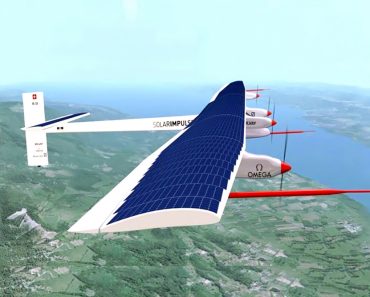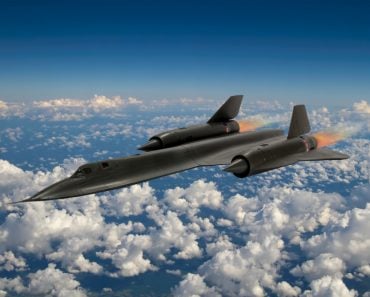Table of Contents (click to expand)
Flying cars have been around for some time, but they have never really taken off. There are many reasons for this, including the fact that they are expensive, dangerous, and difficult to control. However, with the advent of new technologies, such as lightweight materials and computer-controlled aircraft, flying cars may be becoming more feasible.
We’ve all been stuck in traffic before – being deafened by the sounds of honking, crawling across the highway behind thousands of other drivers, cursing the day we bought the car and took a job that required a long commute. It seems like life would be so much easier if we didn’t have to compete with every other person on the road to get where we needed to be.

However, for the better part of a century, automobiles have been the best mode of transportation for the common man (across short distances, of course). Flying in an airplane is definitely faster and more convenient than driving across an ocean (or an entire country), but cars make sense for short trips to the grocery store or the daily drive to work.
So, if air travel is more convenient and faster than driving, but using a car makes more sense for short trips, wouldn’t owning a flying car make more sense?
Recommended Video for you:
Not An Original Idea
Well, you wouldn’t be the first person to think of that; in fact, even though flying cars seem like a futuristic or sci-fi movie invention, the idea for a flying car has been around since the 18th century! From spaceship-like models to fiberglass shells with airplane turbines on the sides, people have been fascinated by the concept of a personal flying car for a long time – especially once the Wright Brothers made their historic flight at Kitty Hawk.
Now, while there have been countless attempts to invent and pilot a flying car, very few have been successful, and some have even cost the inventors their lives in the process. The concept of slapping some wings on the side of a car seems simple enough, but getting the idea “off the ground” is a bit more complicated.
Let’s take a look at some of the logistics that have kept us stuck down here on Earth, rather than racing through aerial highways.
Also Read: Why Are Biplanes Not Commonly Seen Anymore?
The Material Issue
As we know, most cars are quite heavy, and were made of steel for decades before carbon fiber and fiberglass models started making an appearance. The amount of energy needed to lift a steel car complicates things, particularly because putting huge wings on a car would make storage pretty difficult. Fortunately, with recent advances in super lightweight materials, such as graphene and nanostructured ceramics, we may have gotten past a major obstacle on our road to the sky.

The Safety Issue
As the early attempts at flying cars showed us, once you take something off the ground, the potential dangers increase exponentially. Crashes of those test models were often fatal, which has made it difficult to convince inventors and test pilots to try out this high-flying technology.
Also, by taking a car off the road, which restricts movement and range (to a certain degree – Hummers, I’m looking at you), the safety issues of a flying car crashing into a house, a crowded park, or an office building seem too worrisome to ignore. However, with the recent advent of drones and other computer-controlled aircraft, as well as “smart cars”, the possibility of controlling a flying car seems much more realistic. Most of the flying cars being developed today utilize a combination of computers and GPS to navigate, which is commonly called a fly-by-wire system.

For example, Google has already taken its driverless car over more than a million miles of road without causing a single accident. Having half the world suddenly learning how to “fly drive” would be crazy, but significantly lowering the chances of human error makes the idea much more intriguing – and more likely to be approved by authorities!
Also Read: Are Autonomous Cars Really Safer Than Human-Driven Cars?
The Physics Of It All
Many people think that the idea of a flying car is impossible due to the laws of physics, but that’s completely false!
We’ve already invented helicopters, airplanes, spaceships, jetpacks, and dozens of other things that seem as though they’d never get off the ground, and a lot of that same technology could be used for flying cars!
One particularly famous flying car idea, Paul Moller’s Skycar, relies on heavy-duty rotary engines (8 of them, in fact) for vertical lift-off and landing, as well as forward thrust. The rotors are also in protected casings, meaning that this flying car can maneuver tight spaces more safely, and even park in a two-car garage!

Essentially, a Skycar is a combination of a helicopter and an airplane, and some of the most recent fuel estimates put this flying car at about the same as a medium-sized car (approx. 20 miles/gallon or 8.5 km/litre).
While the cost is estimated at about $1 million, if mass production of these vehicles begins, experts think the cost could eventually drop to less than $100,000. That’s still a lot for some people, but can you really put a price on flight?
Also Read: Can We Build An Elevator To Space?
We’re Almost There…
With advanced computer systems, voice-recognition technology, super lightweight materials, and a century of engineering know-how, the fantasy of flying cars could very soon become a reality. If you have the money, you can already buy a prototype, but there is still a long way to go before these personal flying machines will be approved and allowed to fill up the skies.
The demand for this sort of technology is also growing, given that automobiles and traffic jams are blamed for a great deal of carbon emission and damage to the environment. People are looking for ways to live faster, smarter, greener, and more efficiently, which is why flying cars seem like such a perfect idea!
In reality, flying cars on a mass-production scale are probably still a few years away (maybe a decade), but much of that delay is due to logistics, regulations, red tape, oil interests, automotive lobbyists, and a laundry list of other considerations, but the technology is out there.
Who knows, by the time we hit 2020, a flying car might be at the top of your Wish List!
Also Read: Why Have Commercial Aircraft Not Gotten Any Faster In Recent Decades?












